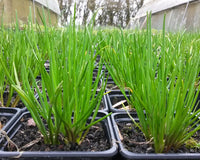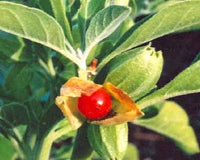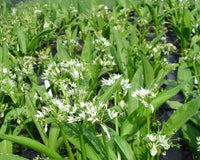Whether you’re working with a sunlit balcony, a tiny patio, or even just a windowsill, growing herbs in pots or containers can bring a splash of green and a whole lot of flavour to your home. This guide is your ultimate step-by-step resource for cultivating vibrant, aromatic herbs that flourish in pots, whether placed outdoors or indoors. From selecting the ideal plants to mastering their care, we’ve compiled essential tips and expert advice to help you transform into a confident potted herb gardener!
Why Grow Herbs in Pots?
Growing herbs in pots or containers is ideal for urban gardeners, novice plant enthusiasts, or anyone short on space. Here’s why it’s a win-win solution:
- Flexibility – Potted herbs can grow just about anywhere, from sunny balcony corners to a windowsill in your kitchen.
- Mobility – Move them into the sun, shelter them from bad weather, or adjust positions as the seasons change.
- Control – You can manage soil type, watering schedules, and even select plants that suit your culinary needs without worrying about garden weeds taking over.
Whether you’re setting up outdoors or indoors, this guide will help you create vibrant, thriving potted herb plants that not only smell amazing and taste even better but also add a touch of natural beauty to your space.
Growing Herbs Outdoors in Pots and Containers

Outdoor gardening with herbs is a breeze when you know the fundamentals. Many herbs thrive in fresh air, making patios, balconies, courtyards, and gardens ideal for pot growing.
Choosing Herbs for Outdoor Pots
Many herbs thrive in containers, making it easy to grow a variety of types. Plus, pots offer flexibility—especially for herbs that might need a little extra care during colder months.
When starting your container herb garden, it’s helpful to understand a few key terms:
- Annuals: These herbs, like basil and coriander, complete their full life cycle in one season.
- Perennials: Herbs like chives and mint will return year after year.
- Evergreen: Some perennial herbs, such as rosemary and thyme, keep their foliage year-round, providing fresh leaves even in winter.
- Hardy: Hardy herbs, like sage and thyme, can survive cold weather and seasonal changes, making them ideal for outdoor pots that stay put.
- Tender or Half-Hardy: These herbs, including stevia and lemon verbena, are sensitive to frost but thrive in warmer conditions. Growing them in pots is an excellent choice because you can move them to a sheltered or indoor spot during colder months.

Top Tips for Pot Planting Outdoors
Selecting the Right Pot
- Go for pots with drainage holes to prevent soggy roots.
- Terracotta pots are fantastic for breathability, but in hot climates, plastic pots retain moisture longer.
Selecting the Right Compost
A general-purpose potting compost is ideal for most herbs and provides a great foundation for healthy growth. Nowadays, most composts are peat-free, making them an eco-friendly choice, and you'll find a fantastic selection at most large garden centres. These are specially designed to drain freely, ensuring your plants' roots stay happy and healthy. Green manures from recycling centres are not really an option for pots - they tend to be too variable in quality and are not graded for drainage meaning they become waterlogged - we suggest these are often best used as soil improvers in garden beds rather than directly in pots.
Planting your herbs
- Fill the pot with your chosen compost.
- Create a planting hole slightly larger than the root ball. Place the herb snugly, ensuring no roots are exposed.
- For large pots, consider companion planting (e.g., parsley with chives). Avoid planting aggressive growers like mint, as its invasive roots can quickly dominate the space.
Positioning your herbs
- Most outdoor herbs love sunshine—aim for 6-8 hours of sunlight a day.
- Avoid areas prone to heavy winds that could damage tender leaves.
Ongoing outdoor care

Watering
Water your plants when the surface of the compost looks dry. There’s no strict schedule for watering, but it’s better to slightly underwater than to overwater. Ensure your pots have proper drainage to prevent water pooling, which can cause root rot. For most of the year, avoid using saucers under your pots so they can drain properly and won’t fill with rainwater. In summer, however, saucers can be helpful, as they catch water for roots to absorb throughout the day. During hot weather, watering in the evening is ideal, as it reduces evaporation and allows plants to fully hydrate for the next day.
Feeding
Potted plants rely on the nutrients in their compost, which typically last for six to eight weeks from potting. Unlike garden plants with constant access to minerals, potted plants can quickly run out of food. To keep them thriving, start using a liquid fertiliser—such as a seaweed-based feed—every two weeks during the growing season.
Pruning
Prune your plants regularly by pinching off flowers or trimming back leaves. This encourages bushier growth and helps your plants remain productive throughout the season. It is generally better to cut the whole stem off with foliage attached just above a pair of leaves. This forces the plant to push out new shoots which keeps it bushy. Without this, plants tend to grow as one long stem, if you pick the leaves off the side to use, eventually you end up with a tall thin plant with a handful of leaves at the top.

When to Repot Your Herbs
If you see roots peeking through the bottom of the pot, it’s time to repot your herbs. Gradually potting them into slightly larger containers each time is best, allowing the roots to settle into the new compost before moving to a bigger pot again. This gives the roots more space and provides fresh nutrients, helping your plants grow stronger and healthier.
Avoid using pots that are too large, as excess compost can hold too much water, creating cold, wet conditions around the roots. This can lead to root rot, especially in slow-growing herbs like rosemary or thyme. A pot just 3–4 cm larger is ideal, as it ensures the compost warms up faster, encouraging healthy root growth.
Growing Herbs Indoors in Pots
No garden? No problem! You can grow a thriving herb collection indoors, as long as they have the right conditions to flourish. Just keep in mind that indoor herbs need more care and attention than if they were grown outside.
Choosing Herbs for Indoor Growing
Herbs particularly suited for indoor life include basil, oregano, parsley, mint, and chives. These responsive plants thrive in pots and are compact enough to fit on windowsills.
Planting indoor herbs
- As with outdoor herbs, only pot on into pots 3-4cm larger. Saucers can be used to to keep windowsills dry, but allow pots to drain when watering - don't let excess water sit in the saucers.
- Fill with well-draining, peat-free compost to provide nutrients.
- Place pots in a spot with bright, indirect sunlight—windowsills facing south, east or west are usually great options.

Photo by Tina Dawson on Unsplash
Indoor Herb Tips
Position
Herbs grown indoors often struggle to get enough light on the side furthest from the window, leading to uneven, spindly growth. To keep your plants thriving, try turning their pots a quarter-turn every few days. This ensures they receive light evenly and grow straight, rather than developing lopsided stems. If natural light is limited, especially in the darker months, consider investing in LED grow lights. These lights can provide the consistent brightness your herbs need to stay healthy and vibrant all year round.
Water wisely
Watch for drooping leaves or dry compost; these are clear signs your plant needs watering. Always allow the water to drain from the pot before returning it to its saucer.
Pest Patrol
Indoor plants can attract aphids and other predators. The warm conditions indoors enable them to multiply quickly. Check leaves and combat pests with neem oil or soapy water before infestations take hold.
Re-potting and Long-Term Care
Just like when growing outdoors, indoor herbs eventually outgrow their pots. Re-pot them gradually into slightly bigger containers following the same advice as above.
Must-Try Herbs for Your Container Garden
Looking for inspiration? Here are some themed herb ideas to kick-start your collection.
Best Herbs to Grow in Your Kitchen
Enhance the flavour and aroma of your meals by growing fresh herbs right on your kitchen windowsill. It's an easy and convenient way to elevate your cooking.
To Add a Splash of Colour to Your Balcony or Patio
Transform your balcony or patio into a lively haven with herbs that bring a burst of colour to your outdoor space.
Medicinal Herbs to Grow in Pots for Natural Remedies
Grow your very own natural medicine cabinet with these medicinal herbs, perfectly suited for pots and ready to provide fresh, healing remedies right at your fingertips whenever you need them.
Low-Growing, Trailing Herbs to Mix Things Up
Create a dynamic and eye-catching potted herb garden by adding a few pots filled with cascading, low-growing herbs that spill beautifully over the edges.
- Golden thyme
- Red creeping thyme
- Doone valley thyme
- Chamomile - Treneague
- Prostrate rosemary
- Corsican mint
- Pennyroyal mint

Ready to get started?
Explore our full range of herbs, perfect for pot gardening, whether you're a novice gardener just starting out or a seasoned pro looking to expand your collection. Our selection is designed to suit all spaces, from small balconies to large patios, so you can create a thriving herb haven no matter where you live or your level of experience.






